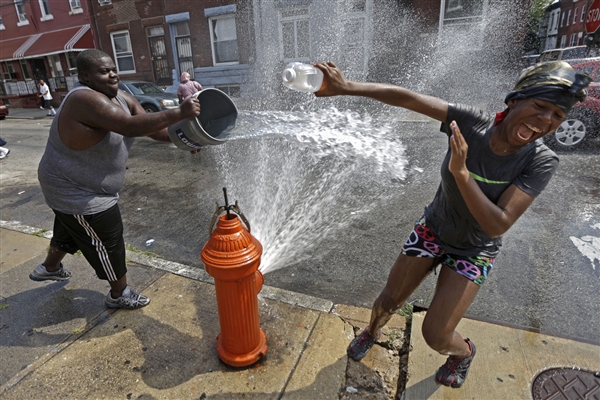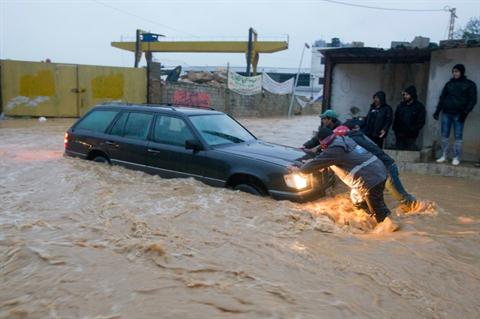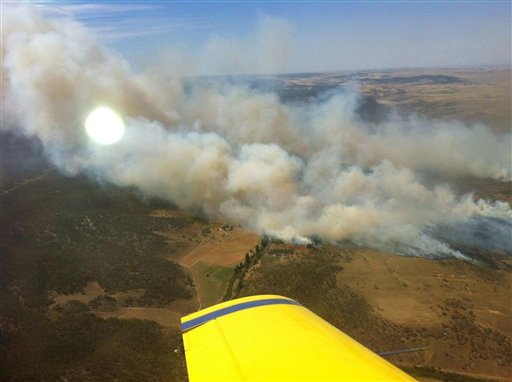
© Matt Rourke / AP filePeople play in water from an open fire hydrant during the afternoon heat on July 18, 2012, in Philadelphia. July was the hottest month ever on record in the contiguous U.S.
If you found yourself bundling up in scarves, hats, and long underwear less than usual last year, you weren't alone: 2012 was the warmest year on record in the contiguous United States, according to scientists with The National Oceanic and Atmospheric Administration.
The average temperature for 2012 was 55.3 degrees Farenheit, 3.2 degrees above normal and a full degree higher than the previous warmest year recorded -- 1998 -- NOAA said in its report Tuesday. All 48 states in the contiguous U.S. had above-average annual temperatures last year, including 19 that broke annual records, from Connecticut through Utah.
It was also a historic year for "extreme" weather, scientists with the federal agency said. With 11 disasters that surpassed $1 billion in losses, including Superstorm Sandy, Hurricane Isaac, and tornadoes across the Great Plains, Texas, and the Southeast and Ohio Valley, NOAA said 2012 was second only to 1998 in the agency's "extreme" weather index.
A long-term warming trend for the U.S., combined with drought and a northerly jet stream, led to the record heat, explained one of NOAA's scientists.


